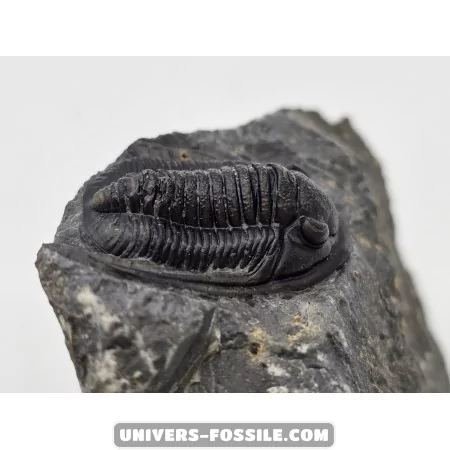Cornuproetus cornutus - Fascinating Trilobite Species | Fossil Enthusiasts

Cornuproetus cornutus Trilobites
Cornuproetus cornutus was a medium-sized trilobite belonging to the order Proetida. It lived during the Devonian period, approximately 390 to 360 million years ago. This trilobite was characterized by several distinctive features:
- Body: Like all trilobites, Cornuproetus cornutus had a body divided into three lobes: the cephalon (head), thorax (body), and pygidium (tail).
- Shape: The body of Cornuproetus cornutus was oval and slightly flattened, with an outer surface covered in a hard, segmented exoskeleton.
- Eyes: This trilobite possessed large compound eyes, which likely enabled it to detect movement and light in its environment.
- Spines: A distinctive feature of Cornuproetus cornutus was the presence of two pronounced spines extending from its cephalon, giving it a unique and recognizable appearance.
Habitat and Distribution
Trilobites, including Cornuproetus cornutus, were marine
Cornuproetus cornutus - Trilobites
Trilobites, such as Cornuproetus cornutus, were fascinating creatures that lived in the ancient seas that covered much of the Earth during the Devonian period. Their fossils are discovered in various regions worldwide, spanning Europe, North America, and Africa.
Lifestyle
Given that trilobites have been extinct for a long time, our knowledge of their lifestyle is based on analyses of their fossils and observations of related species. It is believed that Cornuproetus cornutus was a benthic predator, primarily feeding on small marine organisms that it captured with its specialized mouthparts.
Extinction
Trilobites thrived for hundreds of millions of years but eventually became extinct at the conclusion of the Paleozoic era, approximately 252 million years ago, during the Permian-Triassic extinction event. The exact causes of their extinction remain a subject of debate among paleontologists, but it is likely related to major environmental changes, such as fluctuations in sea level and massive volcanic eruptions.
Fossil Significance
Trilobites, including Cornuproetus cornutus, are of great importance to paleontologists as they provide valuable information about past biodiversity, the evolution of arthropods, and ancient marine environments.
Cornuproetus cornutus - A Fascinating Trilobite Species
Discover the intriguing world of Cornuproetus cornutus, a unique trilobite species that inhabited the ancient oceans during the Devonian period. These arthropods were an essential part of the marine ecosystems, showcasing a remarkable diversity in their appearance and behavior.
Named for its distinctive characteristics, including its horned appearance and intricate exoskeleton, Cornuproetus cornutus has captivated researchers and enthusiasts alike. The fossils of this species are highly sought after for their exceptional preservation and scientific value.
With its widespread distribution across ancient seas, Cornuproetus cornutus provides valuable insights into the prehistoric world, offering a glimpse into the rich biodiversity that existed millions of years ago. The study of these trilobites has helped scientists reconstruct the past environments and understand the interactions between different marine species.
Their fossils are also highly prized by collectors and fossil enthusiasts.
In conclusion, Cornuproetus cornutus is a fascinating species of trilobite that bears witness to the richness and diversity of ancient marine life. Its distinctive appearance and role in the Devonian marine ecosystems make it a subject of interest for scientists and fossil enthusiasts worldwide.
